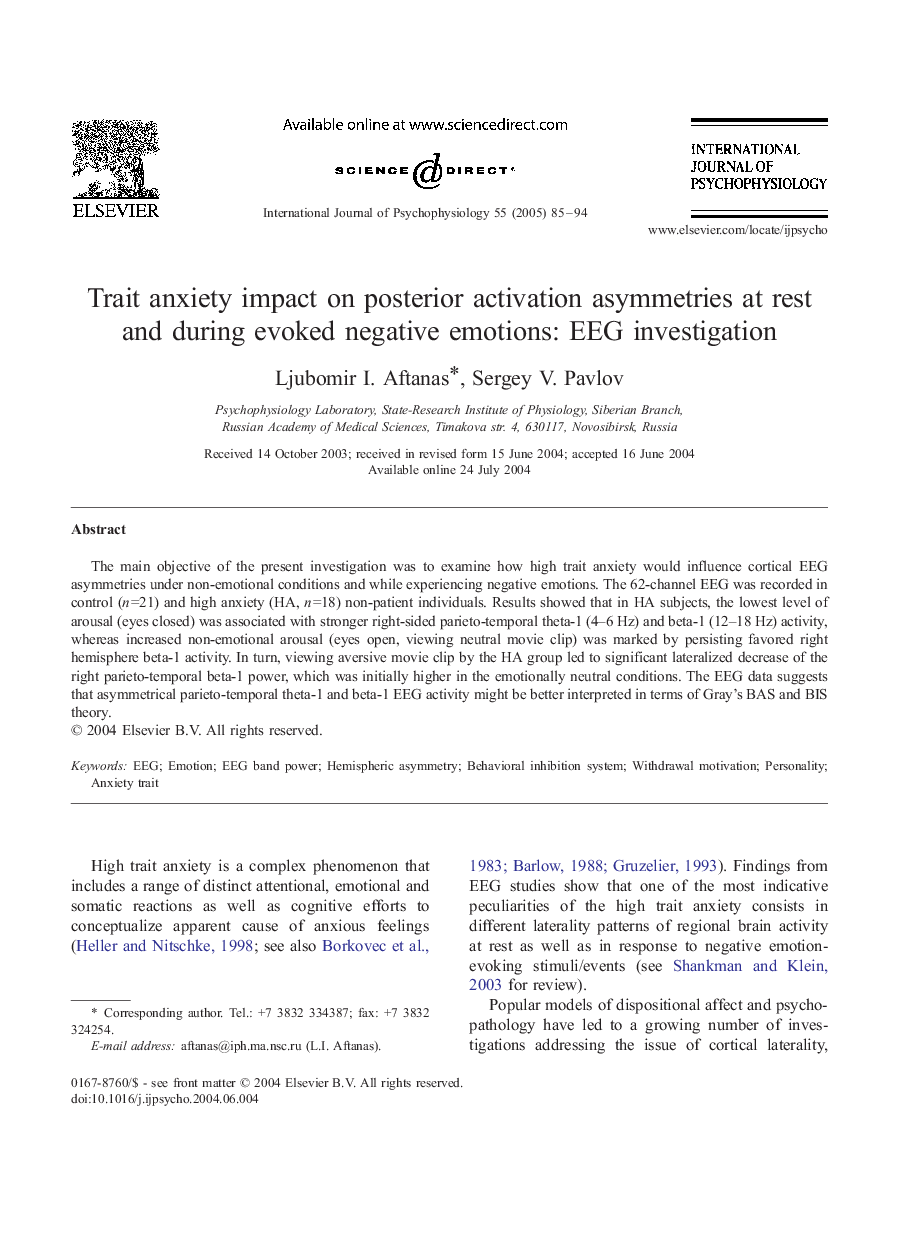| Article ID | Journal | Published Year | Pages | File Type |
|---|---|---|---|---|
| 9722714 | International Journal of Psychophysiology | 2005 | 10 Pages |
Abstract
The main objective of the present investigation was to examine how high trait anxiety would influence cortical EEG asymmetries under non-emotional conditions and while experiencing negative emotions. The 62-channel EEG was recorded in control (n=21) and high anxiety (HA, n=18) non-patient individuals. Results showed that in HA subjects, the lowest level of arousal (eyes closed) was associated with stronger right-sided parieto-temporal theta-1 (4-6 Hz) and beta-1 (12-18 Hz) activity, whereas increased non-emotional arousal (eyes open, viewing neutral movie clip) was marked by persisting favored right hemisphere beta-1 activity. In turn, viewing aversive movie clip by the HA group led to significant lateralized decrease of the right parieto-temporal beta-1 power, which was initially higher in the emotionally neutral conditions. The EEG data suggests that asymmetrical parieto-temporal theta-1 and beta-1 EEG activity might be better interpreted in terms of Gray's BAS and BIS theory.
Keywords
Related Topics
Life Sciences
Neuroscience
Behavioral Neuroscience
Authors
Ljubomir I. Aftanas, Sergey V. Pavlov,
